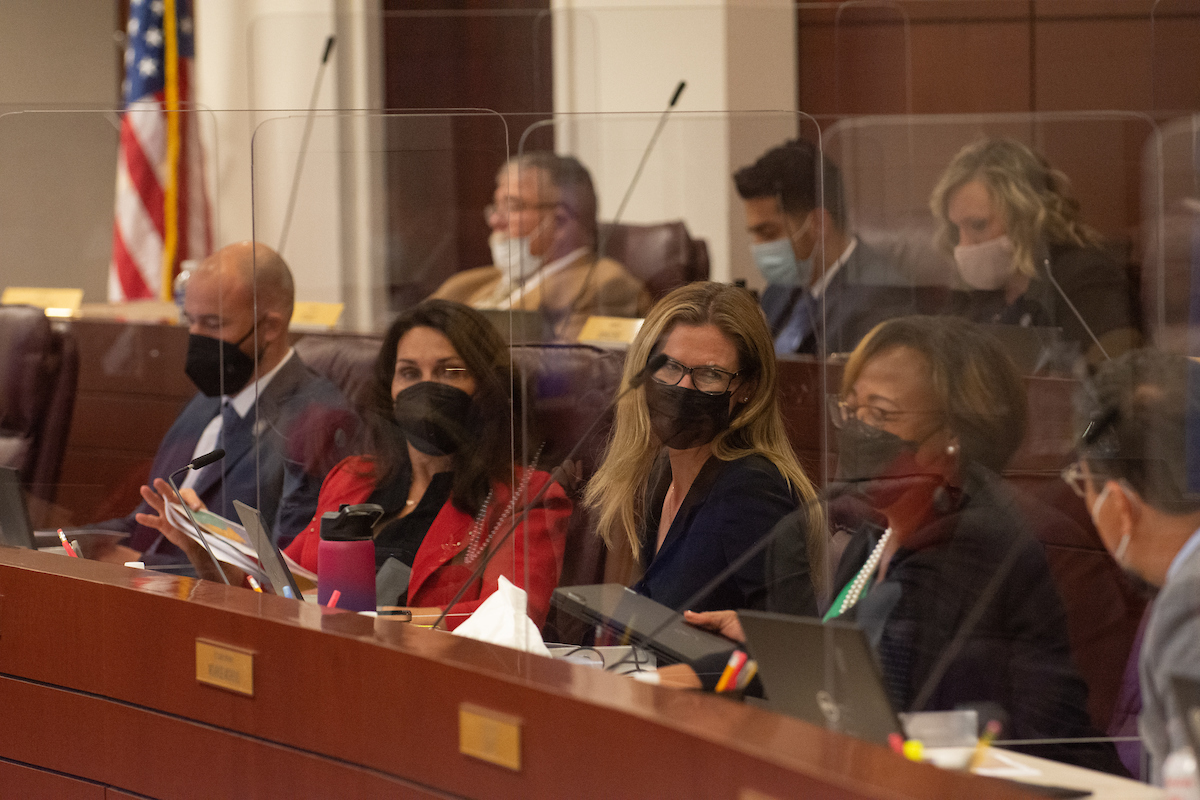Critics say Democrats’ proposed congressional maps dilute Latino political power

This is part of The Nevada Independent’s coverage of redistricting, a process that state lawmakers go through every 10 years to determine new boundaries of political districts. To understand how it works and why it matters, watch our video explainer here.
A new proposed map for how Nevada’s growing population should be divided among four congressional districts attracted significant criticism on Saturday from people who say the arrangement will dilute Latino political power by dividing Latinos among too many different districts.
The maps, which were created by Democrats who control the Legislature and were discussed in Carson City on Saturday as part of the bill SB1, would make it easier for Democrats to win seats representing Nevada in Congress by dividing Democrats more evenly among several districts. But at the same time, they divide the Latino population across the four districts, leaving lower concentrations of Latinos in each district than there are now and potentially making it more difficult for Latinos to collectively elevate candidates they believe represent their community.
Darielys Rodriguez said that while Congressional District 1 (represented by Democratic Rep. Dina Titus) is now about 45 percent Latino and a largely working-class community with a relatively low median income, the proposed maps would max out the district at 35 percent Latino representation and blend them with more affluent suburban areas with higher incomes and education levels.
“This working-class community would no longer be heard as clearly as before,” said Sylvia Lazos, a professor at Boyd School of Law.
Emily Persaud-Zamora, executive director of the advocacy group Silver State Voices, noted that in spite of its large Latino population, Nevada has only ever had one Latino representative in Congress — former Rep. Ruben Kihuen. She said that wasn’t right, and dividing the population too evenly across several districts would perpetuate that situation.
“They lose the ability — the Latino community — to ever be able to elect the candidate of their choice on the congressional level,” she said in an interview.
Some activists saw the legislative process itself as preventing the community from being heard.
The Legislature provided a translator during the hearing to help four callers offer their comments in Spanish — all spoke in opposition to the maps, saying the Democrats’ proposals do not provide sufficient Latino representation. But the process was bumpy, with speakers and the translator talking over each other and having trouble making their points smoothly, and activists complained about the result.
“We are talking about a Latino district that is going to be split up and you can't even have proper translation services for Latino constituents in that district. It’s shameful,” Annette Magnus of Battle Born Progress told lawmakers.
Republicans, too, spoke out against the racial breakdown in the Democrats’ maps, putting forth their own alternatives that include a 48 percent Latino population in Congressional District 1. They said their design for the Assembly calls for 10 districts with Latino populations of 40 percent or more, compared with seven such districts in Democrats’ maps.
Democrats issued a statement criticizing the Republican congressional maps as going too far in the other direction, demonstrating “racially motivated packing” and a “gross attempt to isolate and weaken the political presence of both Latinos and African-Americans across the Las Vegas Valley.”
The Nevadans Count Coalition, a group with 22 member organizations that is focused on representing hard-to-count populations, has proposed a map that would ensure Congressional District 1 has 39 percent Latino representation.
“This can't be about one political party over the other. It can't be about winning elections or not,” said Persaud-Zamora, who is also a leader in the Nevadans Count Coalition. “It's more about what our constituents need.”
For background on how the process will affect Nevada, read The Nevada Independent’s three-part series on redistricting.
The first part is an explanation of why the process matters. To learn about Nevada’s tumultuous redistricting history, from lawsuits to the “session from hell,” read part two. Finally, take a deep dive into the state’s demographic changes since 2010 and look at how uneven population growth could mean significant shifts in political boundaries in the third installment of the series.
